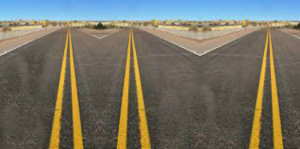
One of the main ways I’ve come to think about the path of sincerity, awakening or wholeness is that it actually consists of three separate roads. A truly integrated and enlivened spiritual life needs to include all three of these.
Here’s a very brief summary of the three roads:
- The high road consists of joy, passion, love and living our deepest aspirations.
- The low road consists of becoming intimate with our shadows/struggles, and working through whatever is preventing us from living on the high road.
- The middle road consists of our everyday life, a place where we come down to earth, find our sense of humor and embrace what is.
The entirety of my work as a teacher and coach is to help people walk and integrate these three roads. Here’s a more detailed description of what they look like and why they’re important:
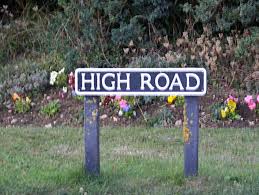 1) The High Road
1) The High Road
This infamous quote by Joseph Campbell sums up the high road very well,
“Follow your bliss. If you do follow your bliss, you put yourself on a kind of track that has been there all the while waiting for you, and the life you ought to be living is the one you are living. I say, follow your bliss and don’t be afraid, and doors will open where you didn’t know they were going to be.”
This refers to aligning our lives with anything that leads to joy or happiness. This could mean stepping into relaxation, intimacy, playfulness, connection, taking on a new hobby, exercising or simply getting out of a destructive situation. Our bliss is totally life affirming.
However, the more we “follow our bliss,” we see it’s not so much about feeling good all the time, as it is about aligning our lives with our deepest longing, vision or aspiration—what I sometimes call living truthfully.
What’s your great aspiration?
Mine is something like uniting passion and presence through my humanity. The wording changes with the seasons, but the deeper cord always seems to bring me more fully into myself, and also more fully into connection and service.
In brief, the high road is what gives our life direction, juice and zest.
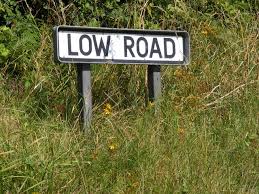 2) The Low Road
2) The Low Road
The low road is about becoming intimate with our “shadows”—aka our struggles, core wounds, limiting beliefs or whatever else INSIDE OURSELVES that’s preventing us from walking the high road.
Our shadow often shows up as shame, anger, sadness, depression, anxiety, fear, numbness, or maybe as destructive habits or deflating beliefs. The process of walking the low road looks like this:
Intimacy with our shadows ————> inner freedom ————> an ability to walk the high road NO MATTER WHAT IS HAPPENING.
The intimacy begins by developing an awareness of how our shadow shows up for us. If we’re feeling a little anxious in a social setting, we first just practice self-honesty, and call out that we’re feeling anxious.
We notice its raw energy in the body. We notice what we’re doing with it—perhaps self-distracting, getting small, lashing out, self-criticizing or checking out.
At times we probe even deeper and notice what feelings or beliefs are underneath it. A feeling of unworthiness? A fear of rejection? A belief that we don’t have anything worthwhile to contribute?
To walk the low road doesn’t mean we get rid of our shadow; instead, we simply shine the light on it.
Sometimes the shining indeed makes our shadow go away. But the going away isn’t actually important.
By shining that light of awareness and intimacy, we slowly step into a sense of spaciousness and acceptance with whatever is happening—aka inner freedom.
We could be going through a big transition, a loss or even intense feelings of shame, pain or fear. It doesn’t really matter, because we’ve learned to embrace our struggle so deeply that it can’t knock us off center anymore. We can solidly live our truth no matter what is happening.
In brief, walking the low road is about finding inner freedom by shining the light on our shadows.
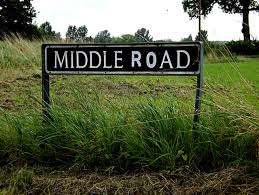 3) The Middle Road
3) The Middle Road
The middle road is the earthy place where our life actually exists. It consists of our job, relationships, friendships, hobbies, our cultural container and ways we spend our time. It points at the raw reality of our everyday life.
The high road is a leaning into joy and purpose. The low road is a leaning into shadow and struggle. The middle road is a leaning into the everyday—really embracing our life as it is.
When people get too caught up in chasing joy, or when they get really serious about working on their shadows, one of the most essential things to do is pull them down to earth.
Remember the laundry. Remember the bills. Visit your friends. Find a practice or hobby that feels really wholesome and natural. Take a walk outside. Eat a banana.
The middle road is a place to stop taking ourselves so seriously—rather, it’s a place of absolute sincerity.
Sure, we may have done a lot of work on ourselves. Maybe we’ve spent thousands of hours on the high road and low road. That’s great, but ultimately those roads just converge into the middle road.
The entire path of sincerity, awakening and wholeness only means anything on the middle road—the place we actually live.
In brief, the middle road is the place of down-to-earth integration.
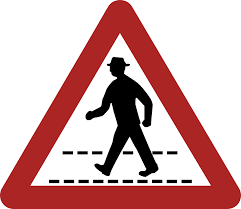 The Danger of Avoiding One of These Roads
The Danger of Avoiding One of These Roads
People very commonly try to avoid walking the low road. This is because it forces us to fully experience the most uncomfortable parts of ourselves. In turn, people often make “follow your bliss” into their life philosophy. They get really into the law of attraction, positive thinking and constantly seeking out feel-good states. They become high road junkies.
There’s a term for this mode of living: spiritual bypassing.
I’ve been guilty of spiritual bypassing many times over. For example, I spent many years using my spiritual practice to try and “transcend” my lifelong apathy and complacency. I figured if I just got really, really good at meditation, the apathy would dissolve and I would always be really joyful.
Similarly, for most my life I was blind to my anger and shame. I never really wanted to experience those “negative” emotions. I just wanted joy and positivity. Little did I realize, they were seeping through all the corners, guiding my choices, impacting my relationships and preventing me from fully living the high road.
It wasn’t until I took a deep dive into the low road that I gained noticeable freedom from my apathy, anger and shame.
On the flip side, it occasionally happens that people get a little too into shadow work, and lose sight of the high road. They keep themselves in situations that aren’t actually good for them, like a destructive relationship, because it’s “good for their growth.” Or maybe they just spend so much time in their shit that they become self-loathing or depressed.
The low road encourages us to explore our struggles and shadows, but not to lose ourselves in them.
If we’re going too far into the low road, a little dose of the high road can really help—maybe a vacation, some romance, a yoga class, reading a novel or just taking a breather on the middle road and chilling out for a bit.
Finally, when people lose sight of the middle road they can become somewhat obnoxious. In the Zen tradition, they say that these people “stink of Zen.” It’s like they have a stick up their butt. Way too freaking serious.
At the extreme, these folks become arrogant, judgmental and holier than thou.
The basic remedy is to just come back to earth. Eat an ice cream cone. Stop meditating for a week. Have a mundane conversation. Watch or play some sports. Take a leisurely bicycle ride. Go swimming. Whatever we do—stop taking it so seriously!
As a summary to all this, the whole path is really just about balance and integration.
To become a very sincere person means having a direction, but also embracing all the parts of yourself while still being a normal person who lives on planet earth.
Which of the three roads comes most easily for you? Do you tend to avoid any of them?
